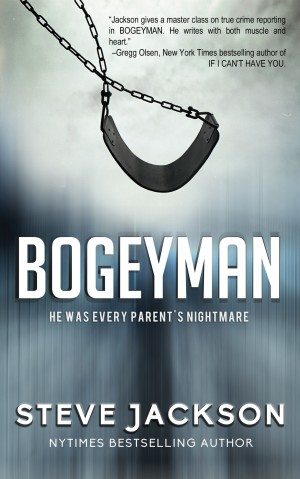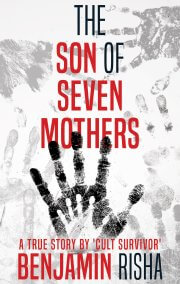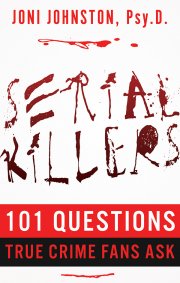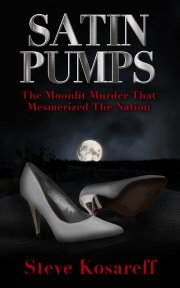A few years ago, author Joe McGinniss, whose Fatal Vision is among a handful of acknowledged classics in true crime, pronounced the genre deader than Marley:
“The last three books I’ve written have been about soccer, which nobody in America cares about; horse racing, which nobody in America cares about; and true crime, a genre that expired sometime last century . . .”
If the genre is dead, it died fairly young. It hasn’t even been 50 years since Truman Capote’s In Cold Blood plucked crime reporting from the pages of pulp magazines and plopped it down in a book.
Even for a true-crime writer, death isn’t usually a matter of perspective. Dead is dead. Maybe true crime is dying, or maybe it has ceased to produce the kinds of profits that McGinniss and other big-time writers expect, or maybe it’s just evolving. A gaggle of new true-crime books are being produced every year, along with an unprecedented number of TV shows dealing with the reality of crime. So “dead” might be a little strong.
But there’s no doubt true crime, as a genre, is ailing. Sales are down, so traditional publishers are buying fewer titles and catalogs are shrinking. Every editor in New York looks askance at true-crime submissions. The best true-crime writers are exploring new publishing models or switching genres altogether. True crime has had its cycles in the past, but this one feels different.
For sure, the genre has made a deliberate, intentional shift away from the narrative grace of Capote, Norman Mailer, and Jack Olsen in an effort to appeal to a less sophisticated reader who is more likely to be influenced by faux blood on the cover and will almost always check to see if the book includes gruesome photos before buying. I know of some authors out there who genuinely want to write (or have written) beautiful books that, like Capote, explore bigger issues reflected in crime and punishment, but they are discouraged by editors … while just about any grocery clerk can publish a quickie book about a local murder case (as long as there is a lurid element, great pictures and the word “fatal” in the title).
“What now passes for true crime is a weakly researched overblown kind of National Enquirer writing with a heavy emphasis on fictionalization and blighted romance,” the late, great Jack Olsen told a reporter not long before he died in 2002. “Crime is an important, meaningful and revealing subject, and good books will continue to be written on the subject, but they won’t be formula works and they won’t be junk. They’ll be carefully researched and skillfully written, probably by bright and scholarly young writers just coming into their own.”
There is a kernel of truth in what McGinniss says. If we only took the pulse of true crime’s literary merits, the genre definitely died … right about the time of Fatal Vision (1983). McGinniss was among the first big names in true crime to veer away from stories with complex moral reflections on society to the lurid, commercial crap that appealed to a different kind of audience. So it’s hard to disagree with Joe—even though he certainly didn’t make the comment knowing that he was part of the sea-change, along with Ann Rule and others.
Self-publishing has helped and hurt. It’s offered innovative outlets for serious, established crime writers such as Steve Hodel and Gregg Olsen, but it has also polluted the market with badly researched, poorly written, and utterly untrustworthy junk. TrueCrimeZine.com foresaw it five years ago: “As self-publication become easier and less expensive, [the quality of] all genres will suffer.”

Steve Jackson’s “Bogeyman” represents the new breed of true crime books coming from a new publishing model at WildBlue Press.
Thankfully, there have been a few remarkable exceptions in the past 20 years, among them John Berendt’s Midnight in the Garden of Good and Evil, Dave Cullen’s Columbine, and Erik Larson’s Devil in the White City. They have already taken their rightful places as classics in a genre that, at best, is still defining itself but wants desperately to be just like its earliest forebears.
And some of us successfully published crime writers are doing dangerous Frankenstein experiments, trying to find life in the alleged corpse. In new ventures such as WildBlue Press and Crime Rant Books, we’re cobbling together something new from parts, stitching the best of traditional publishing to the best of digital publishing to build a completely different model. Time will tell if it lives.
It’s quite possible that the last 20 years have simply been a phase, true crime’s adolescence, where it was doing stupid things because of hormones. Maybe the adult years will reflect the genre’s early precociousness and return to its sturdier, more robust, more literary roots.
But maybe not. Maybe it will simply decay back into its pulpy DNA and die out completely. Maybe the future of true-crime writing is on life-support in the small houses and POD presses.
You are a true-crime fan. Talk to me. What is the current state of true crime? How does it compare to the past and how would you describe its future?
Ron Franscell is the bestselling author of The Darkest Night and Delivered from Evil. His acclaimed mystery novel, The Deadline, was recently re-released by WildBlue Press.





 Join our email list
Join our email list
Leave a Reply